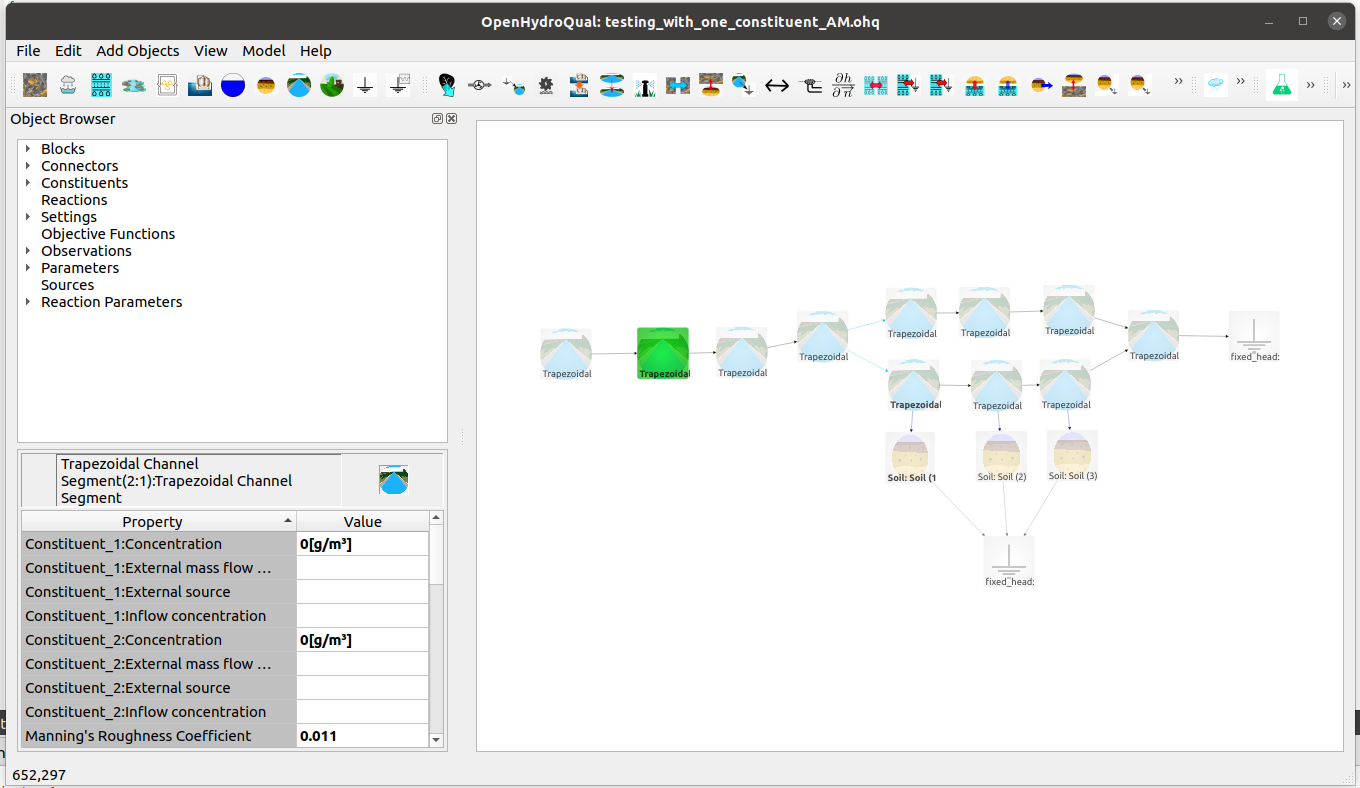OpenHydroQual is an open-source, agile, and expandable component-based tool for developing and optimizing a wide range of models representing water systems. Some examples include reservoir operations, rainfall-runoff models, stormwater management, flow and transport in soil and groundwater, pipe networks, water quality in surface and subsurface environments, and integrated urban water management.

OpenHydroQual: Integrated Environmental Modeling Made Simple
OpenHydroQual is a powerful, open-source platform for simulating hydrologic, hydraulic, and water quality processes. Designed for flexibility and scientific accuracy, it brings together surface water, groundwater, urban infrastructure, and treatment systems in one streamlined environment.
What Is OpenHydroQual?
OpenHydroQual is a modular simulation engine built for water professionals, researchers, and students. Whether you're modeling a stormwater control system, tracking groundwater recharge, or designing a sewer network, OpenHydroQual provides the tools you need—without locking you into rigid structures.
Key Features
- Modular Plugin System: Customize your models using JSON-based plugins. Define blocks, links, properties, units, and more—no coding required.
- Cross-Domain Integration: Seamlessly model systems that span:
- Surface water and river channels
- Groundwater aquifers (confined/unconfined)
- Unsaturated soil and infiltration
- Urban infrastructure like sewers, tanks, and wells
- Stormwater BMPs and sediment transport
- Treatment plants and biological processes
- Data-Driven & Dynamic: Use symbolic expressions, time-series inputs, and logical rules to simulate real-time conditions. Auto-calibration allows parameter estimation based on observed data.
- Numerical Stability & Speed: Built-in solvers ensure accuracy. Multi-threading accelerates large-scale simulations.
- User-Friendly by Design: Auto-generated forms, unit support, and tooltips make advanced modeling accessible—even for beginners.
Who's It For?
- Environmental engineers
- Hydrologists and hydrogeologists
- Urban water planners
- Educators and students
- Researchers developing new modeling components
Get Started
Explore the documentation, or check out our YouTube channel. OpenHydroQual is ready to help you understand, design, and optimize water systems—your way.
How OpenHydroQual Models Work
OpenHydroQual models represent water systems as networks of blocks and links. Each block simulates a physical or conceptual unit—such as a tank, soil compartment, or treatment reactor—while links represent the flow of water, chemicals, energy, or other materials between them. The platform solves balance equations for key state variables such as water volume, chemical concentration, energy, or cost, all defined through user logic.
At the core is a plugin system. Users define custom components in JSON files, specifying their properties, behaviors, and governing equations. Whether modeling stormwater BMPs, nutrient cycling, or complex treatment systems, you can fully tailor your model to project needs.
A complete model includes:
- Blocks & Links: Structural units and their connections
- Sources: Inputs of water, mass, or any user-defined variable
- Chemical Constituents: Unlimited types with customizable reaction networks
- Parameters: Unknowns calibrated or optimized from observed data
- Objective Functions: Quantities targeted for optimization, such as cost or pollutant removal
Since all governing logic and equations are stored in editable JSON files, OpenHydroQual is fully customizable—allowing users to modify existing components or create entirely new ones.
What’s Next?
We’re working on:
- Real-time control and optimization features
- Machine learning integrations
- Web-based model setup and visualization
- Auto-generated plugin documentation